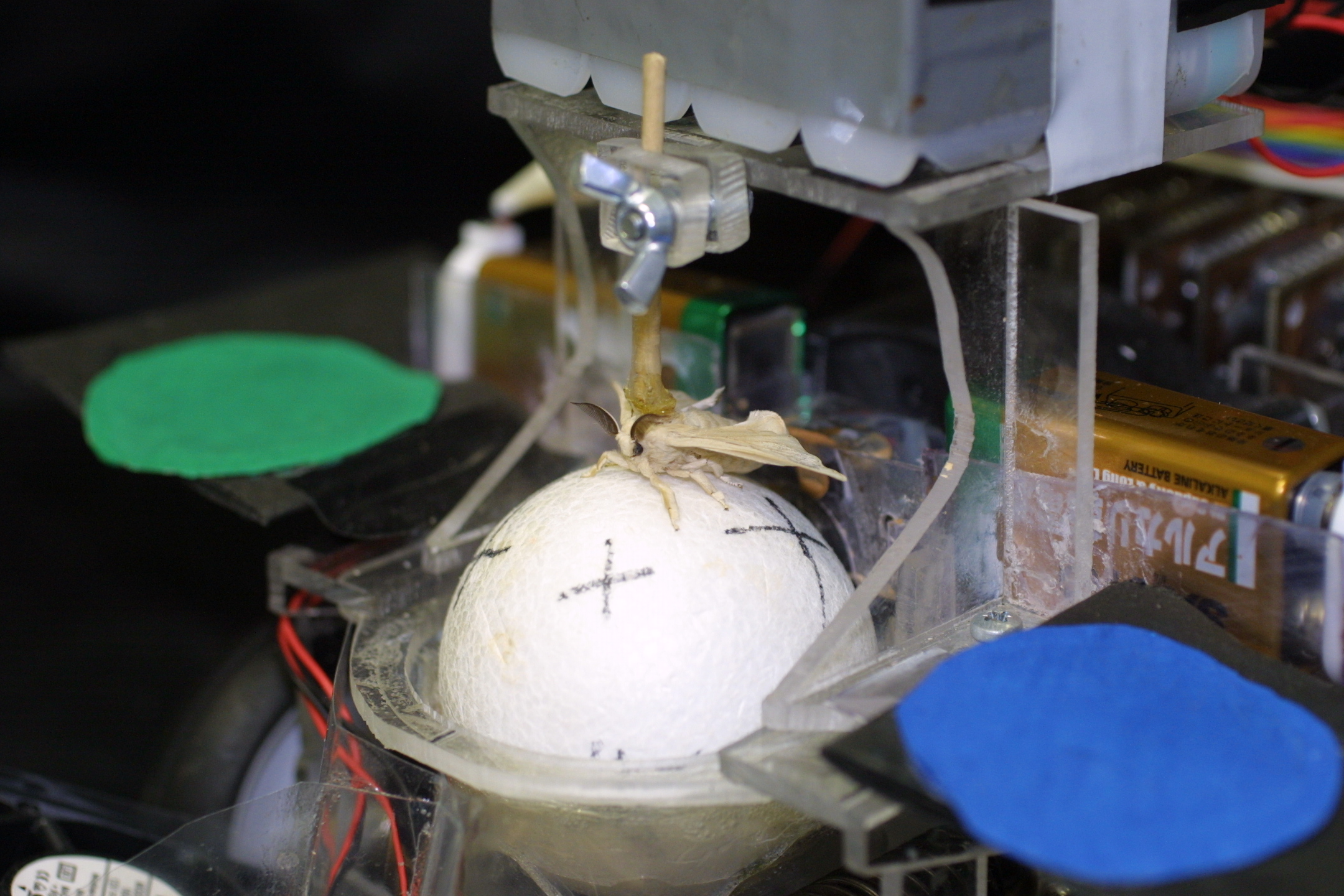No Drivers Ed necessary –the male silkmoth can steer a small car toward what he thinks is a female moth just by following his natural mating-dance instincts.
Researchers at the University of Tokyo report in Bioinspiration & Biomimetics that a tethered insect can steer a two-wheeled robot toward the source of female moth pheromones by walking on a freely rotating ball that acts as his helm. In this YouTube video, you can see a moth pass his driving test even when the robot vehicle has been programmed to pull to one side.
There is a serious point to this work. The researchers hope to learn how the moth tracks odors so they can better program self-driving robots to seek out hazardous chemical spills or leaks in the environment. Airborne chemicals can be difficult to track because they leave an intermittent trail, dispersed in patches away from their source. But male silkmoths are adept at seeking out a plume of a potential mate’s pheromones, so the researchers developed the moth car to study the way the Romeos search for love.
Don’t settle for half the story.
Get paywall-free access to technology news for the here and now.
